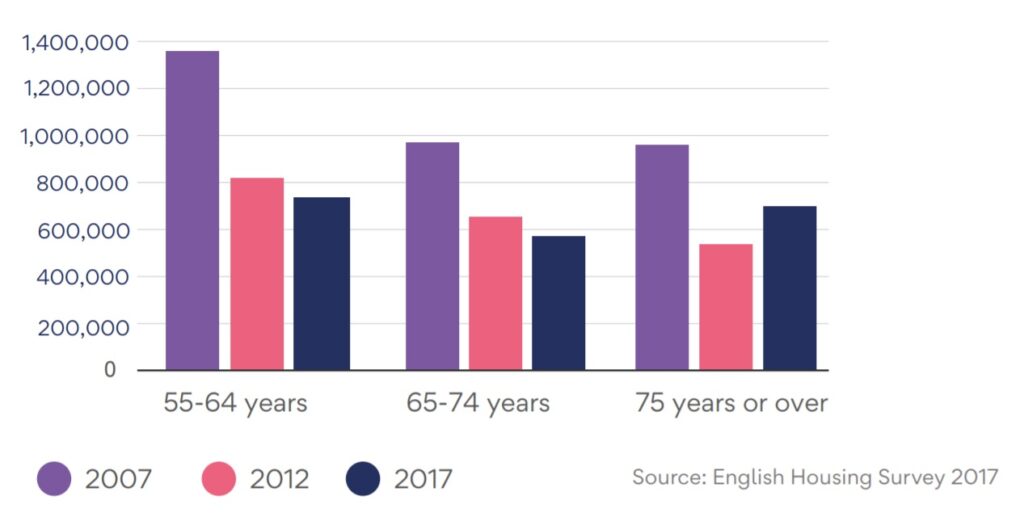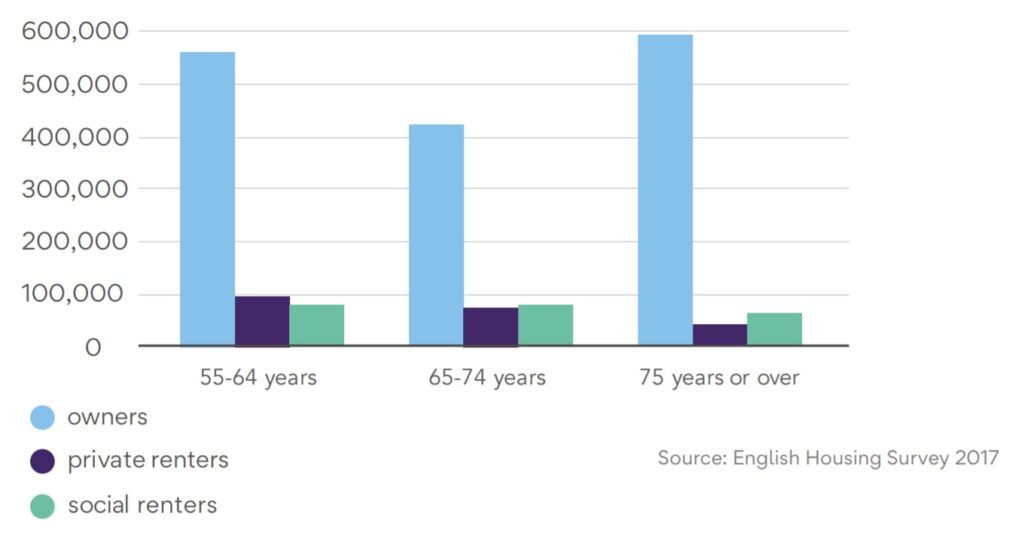Holly Holder is a Senior Evidence Manager at the Centre for Ageing Better. In their recent report ‘Home and dry: The need for decent homes in later life’, published jointly with Care & Repair England, they call for greater action to address the quality of our housing stock. In this article, Holly summarises some of the key findings.

Of the 23.2 million households in England today, 4.3 million (19%) are living in a poor-quality home. That means one-fifth of our homes are in such a bad condition that they do not meet the Government’s criteria for decency, meaning that they are in a state of serious disrepair, cold, damp, and/or so hazardous that they pose a threat the occupant’s health or safety.
Homes where it is simply not possible to heat the rooms to a comfortable temperature. Homes where it is not possible to move about freely due to the risk of falling over. Homes with leaky roofs, dodgy electrics, no running water. This is the reality for an estimated 10 million of people, close of half of which are homes lived in by someone aged 55 years old and over, and a million with at least one child.
The impacts of poor-quality housing are wide-ranging: an increased risk of injury, stress, isolation, affordability issues and insecurity of tenure. Perhaps most significantly given the current global pandemic, these houses can also cause or exacerbate a range of respiratory and cardiovascular conditions, a number of which have been identified as leading to a high risk of severe illness from coronavirus.
Stay at home, protect the NHS, save lives. Those of us who are now at home for 23 hours a day are experiencing a taste of what many older people who spend a great deal of time at home and who are more likely to have a long-term illness or disability, experience in their daily lives. For those living in a poor-quality home, this period of confinement, however necessary, will be a challenge for their physical and mental health.
Ideally, this would be the place in the article where there would be a description of the many and varied national policies that are in place to improve our housing stock. Unfortunately, there are no specific policies in place to address non-decency, and previously available funding for low-income homeowners to maintain or repair their homes has been withdrawn.
The number of ‘non-decent’ homes (as defined by the Government’s decent home standard) fell considerably after a period of significant national investment (from 7.3 million in 2008 to 4.3 million in 2018). The overall figures continue to decline but at a much slower rate since the funding has stopped. And for households headed by someone aged 75 and over, the number of non-decent homes has actually increased according to the latest figures.
Number of non-decent homes, by age

At a local level, there are examples of best practice where collaborations between hospital discharge teams and local housing repair teams mean that people are not returning to situations that could hinder their recovery. In other areas, local authorities are using the Disabled Facilities Grant creatively or providing repair loans to those who meet certain criteria.
These examples demonstrate an obvious point: change is possible. We may have the oldest housing stock in Europe – with five million homes built before 1919 – and some very poor original construction methods but our current situation is not an inevitability.
The routes to change vary depending on whether the home is owned by the occupants, socially or privately rented. The scale of the problem is largest among home-owners with 62% of all non-decent homes – 2.7 million households – in this sector. The percentage of homeowners increases significantly with age, with the vast majority of older people living in homes they own (77%). This is important because homeowners are solely responsible for maintaining their property (in comparison with social or private tenants).
Number of non-decent homes by tenure type and age

For some low and middle-income homeowners, there is a mismatch between household income over time, the costs of home maintenance, repair and renovation and property values, which can result in their property falling into disrepair. For others, the issue is not financial. One third of poor-quality homes could be repaired for £1,000 or less. These people may not know how to access impartial information and advice or have a health condition that impacts on their ability to take action.
From 1945 until 2010, we have had some form of national housing renewal policy and other initiatives to address housing disrepair. However, since 2010, there have been no national government policies, targets or funding streams specially aimed at tackling poor-quality housing.
At a national level, it is important that the Government considers how it can create new funding mechanisms to support low-income homeowners, accessible to those most in need, to bring their homes up to basic standards of decency. The Government has committed to the green agenda and we suggest that a focus on improving thermal standards in households would provide mutual gain.
At a local government and practitioner level, there is much that can be achieved when working in collaboration across public sector organisations and with the third sector.
We all deserve to live in a safe, accessible home that enables us to lead a good later life. At the Centre for Ageing Better, we will continue to share what we know from the evidence and best practice in order to make this ambition a reality.
Further information:









